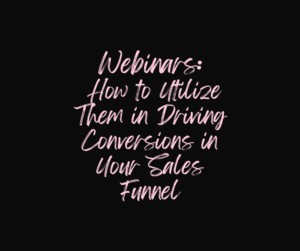
In today’s digital age, having a strong online presence is essential for contractors looking to generate leads and grow their businesses. Your website serves as the cornerstone of your online presence, acting as a hub where potential clients can learn about your services, view your portfolio, and get in touch. However, simply having a website is not enough. To effectively generate leads, your website must be optimized to attract and convert visitors into qualified leads. In this comprehensive guide, we’ll explore strategies for optimizing your website for lead generation as a contractor.
Understanding Lead Generation Website Optimization
Before diving into specific strategies, let’s first understand what lead generation website optimization entails. Essentially, it involves designing and structuring your website in a way that encourages visitors to take action and convert into leads. This may include optimizing your site for search engines, improving user experience, creating compelling calls-to-action, and providing valuable content that addresses the needs and concerns of your target audience.
1. Define Your Target Audience and Goals
The first step in optimizing your website for lead generation is to define your target audience and goals. Who are your ideal clients? What services do you offer, and what problems do you solve for your clients? By clearly defining your target audience and goals, you can tailor your website content and design to resonate with your ideal clients and encourage them to take the desired action.
2. Optimize Your Website for Search Engines (SEO)
Search engine optimization (SEO) is crucial for ensuring that your website ranks well in search engine results pages (SERPs) and attracts organic traffic. To optimize your website for SEO, focus on:
- Keyword Research: Identify relevant keywords related to your services and geographic location and incorporate them into your website content.
- On-Page Optimization: Optimize meta tags, headings, and image alt tags with your target keywords.
- Local SEO: Claim and optimize your Google My Business listing and ensure your business information is consistent across online directories.
3. Create Compelling and Relevant Content
Content is king when it comes to attracting and engaging potential clients. Create informative and valuable content that addresses the needs, concerns, and questions of your target audience. This could include blog posts, articles, case studies, project portfolios, and client testimonials. By providing helpful content, you establish yourself as a trusted authority in your industry and increase the likelihood of converting visitors into leads.
4. Showcase Your Portfolio and Testimonials
One of the most effective ways to build trust with potential clients is by showcasing your past work and client testimonials. Create a dedicated portfolio page where visitors can view examples of your completed projects, along with descriptions and photos. Additionally, include testimonials and reviews from satisfied clients to provide social proof of your expertise and reliability.
5. Optimize Your Contact Forms and Calls-to-Action (CTAs)
Make it easy for visitors to contact you and take the next step by optimizing your contact forms and calls-to-action (CTAs). Place prominent CTAs throughout your website, encouraging visitors to request a quote, schedule a consultation, or sign up for your email list. Keep contact forms simple and user-friendly, asking for only essential information to minimize friction and increase conversions.
6. Implement Live Chat and Chatbots
Live chat and chatbots provide additional channels for engaging with website visitors and capturing leads in real-time. Implement live chat functionality on your website to allow visitors to ask questions and get immediate assistance. Chatbots can also be used to automate responses to common inquiries and guide visitors through the lead generation process.
7. Optimize for Mobile Devices
With an increasing number of users accessing the internet from mobile devices, it’s essential to ensure that your website is optimized for mobile responsiveness. A mobile-friendly website provides a seamless user experience across all devices, increasing engagement and reducing bounce rates. Test your website on various devices and screen sizes to ensure compatibility and usability.
8. Track and Analyze Website Metrics
Regularly monitor and analyze key website metrics to assess the effectiveness of your lead generation efforts. Track metrics such as website traffic, conversion rates, and user engagement to identify areas for improvement and optimization. Use tools like Google Analytics to gain insights into visitor behavior and preferences, allowing you to make data-driven decisions to enhance your website’s performance.
9. Continuously Test and Iterate
Optimizing your website for lead generation is an ongoing process that requires continuous testing and iteration. Experiment with different website elements, such as CTAs, landing pages, and content formats, to identify what resonates most with your audience. A/B testing allows you to compare variations of these elements and determine which ones yield the best results in terms of lead generation and conversion rates.
10. Stay Updated with Industry Trends
Finally, stay updated with industry trends and best practices in website optimization and lead generation. The digital landscape is constantly evolving, with new technologies and strategies emerging regularly. By staying informed and adaptable, you can ensure that your website remains effective at generating leads and driving business growth over the long term.
Conclusion
Optimizing your website for lead generation is essential for contractors looking to attract and convert potential clients online. By defining your target audience, optimizing for search engines, creating compelling content, showcasing your portfolio, and implementing user-friendly contact forms and CTAs, you can maximize your website’s effectiveness at generating leads and driving business growth. Continuously track and analyze website metrics, test and iterate on different elements, and stay updated with industry trends to ensure ongoing success in lead generation as a contractor.














